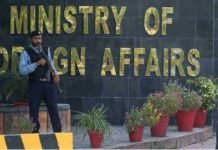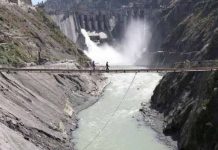Over 2,500 RO and UF plants installed across Sindh to provide clean drinking water, yet 70% remain dysfunctional. Billions squandered in fake tenders, ghost installations, and political patronage while citizens thirst.
By Nazir Siyal / DNA
KARACHI: A massive corruption scandal has engulfed the Sindh government’s much-publicized Reverse Osmosis (RO) water plant initiative, revealing decades of misuse of funds, political favoritism, fake tenders, and abysmal performance of over 2,500 RO and Ultra Filtration (UF) plants installed across the province.
Despite spending over Rs 40 billion on the Drinking Water Hub (DWH) Project, the majority of RO plants lie abandoned, stripped for scrap, or never became operational.
Originally launched to provide clean drinking water to desert and drought-prone districts like Tharparkar, Badin, and Mirpurkhas, the plan included 450 RO plants in Tharparkar, 18 in Karachi’s District West, and 10 in each remaining district.
The reports showing that only 101 out of 832 RO plants in Tharparkar are functional at a dismal 12% success rate. A Statewide Failure is countless.
According to a 2025 report by the Public Health Engineering Department (PHE), out of 2,529 RO and UF plants, only a fraction are operational,
While others like the Shaheed Benazirabad, 445 of 1,329 functional it’s about 33%.
In Jacobabad, 46% functionality,
While rest including Sukkur 67%, Shikarpur: 88%, Jamshoro: 27%, Hyderabad: 69%, Tharparkar: 12%, Mirpurkhas: 98%
distinctional.
Despite massive failures, the government has announced a fourth phase of installations and plans to implement a digital GPS-based monitoring system.
However, critics and lawmakers argue this is “too little, too late” in the face of the scale of misappropriation.
Audit Exposes Unthinkable Mismanagement
The Supreme Court Water Commission, audit reports, and media investigations have exposed:
Rs 434 million wasted on reviving the non-functional Islamkot mega RO plant in Tharparkar.
Plants awarded to a single politically-connected firm without proper tendering.
Inflated unit costs (Rs 20–25 million per plant), despite lower market prices.
Scrap machinery, lack of maintenance, and fake installations.
Generators procured but never used, and hundreds of plants simply abandoned.
Audit records also showing that Rs 97.865 billion in unproduced documents. Rs 32.122 billion in irregular hiring. While Rs 55.408 billion in procurement lapses and Rs 65+ billion in operational inefficiencies.
The Sindh Finance Department alone is accused of Rs 66.556 billion in financial irregularities.
Meanwhile, 31 inquiries by finance and agriculture departments, and 22 by departmental accounts committees, have resulted in delayed justice and zero accountability.
Opposition lawmakers in the Sindh Assembly have repeatedly raised the alarm over the issue.
MNA Nand Kumar had also criticized that billions spent on 1,300+ RO plants have yielded no benefit to the public.
Mithi RO plant, once hailed as Asia’s largest, has never functioned.
The Asia’s largest capacity-wise RO plant at Missri Shah, Mithi, installed for Rs 300 million to supply 2 million gallons/day, was abruptly shut down due to unpaid salaries about a decade.
Employees of Pak Oasis, the contractor for all 750 RO plants in Thar walked off after 4 months of non-payment.
This Mithi plant, inaugurated by PPP co-chairman and former president Asif Ali Zardari.
With a Rs 35 million operational budget blocked by the Sindh government, hundreds of solar-based RO systems now lie dormant.
PAC (Public Accounts Committee) reviewed 1,383 audit paras in the past year, deferring 1,058 and recovering only Rs 16.22 billion, a fraction of the loss.
In a last-ditch effort, the Sindh government introduced real-time digital dashboards for monitoring RO and UF plants.
While GPS tracking and live dashboards are being rolled out, officials admit the revival of non-functional plants in low-performing districts like Tharparkar and Jamshoro is a top priority.
But for millions of rural Sindh’s citizens, who continue to walk miles for water or rely on contaminated sources, these reforms come after years of deception, negligence, and plunder.
What was launched as a lifeline project to quench the thirst of Sindh’s poorest has become a textbook case of elite impunity, development fraud, and public betrayal.
While billions flowed into ghost companies and fake contractors, not a single glass of clean water reached many of Sindh’s most vulnerable communities.
Until accountability is real and recovery efforts honest, the people of Sindh will remain victims of a state that failed them drop by drop.

















